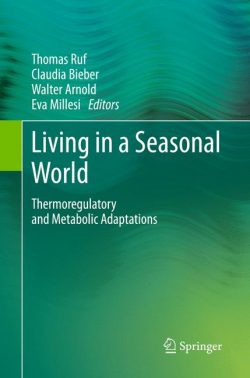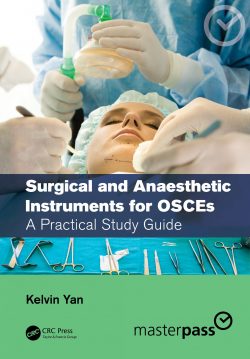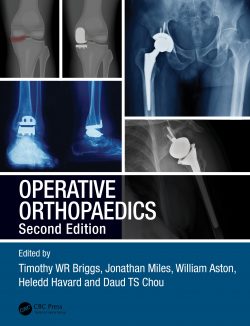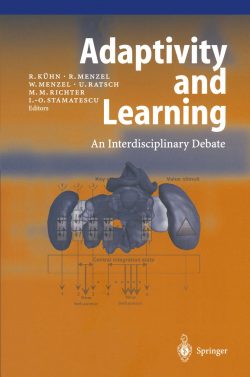This book provides readers with an anaesthesia-focused alternative to general physiology textbooks. The new edition has been reorganised with the trainee anaesthesist in mind, into shorter bite-sized chapters ideal for exam revision. The content includes the physiology of all major organ systems, with specific emphasis on the nervous, respiratory, and cardiovascular systems as well as special sections on pain, aging, specific environments and obesity. Alongside the learning objectives, reflection points and a handy summary of physiological equations and tables, there is greater emphasis on clinical application in this fourth edition, with applied physiology included in almost every section.
Preface to the first edition
Preface to the second edition
Preface to the third edition
Preface to fourth edition
Acknowledgements
Authors
Contributors
Section One: Basic Cell Physiology
1. Cell Components and Function
2. Physiology of Excitable Cells
3. Neurotransmitters and Receptors, Ion Channels, G Proteins and Second Messengers
Section Two: Physiology of the Nervous System
4. Neuronal Function
5. Blood–Brain Barrier and Cerebrospinal Fluid (CSF)
6. Cerebral Circulation
7. Spinal Cord: Anatomical and Physiological Features
8. Sensory System
9. Motor Function and Control: Descending Tracts
10. Autonomic Nervous System
11. Consciousness, EEG, Sleep and Emotions
Section Three: Muscle Physiology
12. Striated Muscles: Skeletal and Cardiac Muscles
13. Muscle Spindles, Golgi Tendon Organs and Spinal Reflexes
14. Smooth Muscle
Section Four: Respiratory Physiology
15. Functions of the Respiratory System
16. Mechanical Properties of the Lungs
17. Gas Exchange in the Lungs
18. Carriage of Oxygen in Blood
19. Carbon Dioxide Carriage in Blood
20. Pulmonary Circulation
21. Control of Ventilation
22. Applied Respiratory Physiology
Section Five: Cardiovascular Physiology
23. Functions of the Cardiovascular System
24. Electrical Properties of the Heart
25. Mechanical Events of the Cardiac Cycle
26. Pressure–Volume Loop of the Left Ventricle
27. Physical Factors Governing Blood Flow Through Vessels
28. The Systemic Circulation
29. Microcirculation
30. Venous Return and Vascular Function
31. Regulation of Arterial Blood Pressure
32. Integrated Cardiovascular Responses
Section Six: Gastrointestinal Physiology
33. Saliva, Swallowing, and Lower Oesophageal Sphincter
34. Stomach: Gastric Secretions, Motility, Digestion and Vomiting
35. The Small Intestine: Secretions, Digestion and Motility
36. The Large Intestine
Section Seven: Liver Physiology
37. Functions of the Liver
38. Liver Blood Flow
39. Liver Function Tests and Physiological Features of Liver Failure
Section Eight: Renal Physiology
40. Functions of the Kidneys and Functional Anatomy
41. Renal Blood Flow
42. Glomerular Filtration
43. Tubular Function
44. The Loop of Henle and Production of Concentrated Urine: Counter-Current Mechanisms of the Kidney
45. Overview of Renal Control of Acid–Base Balance
46. Applied Physiology: Renal Failure
Section Nine: Acid–Base Physiology
47. Basic Concepts of Acid–Base Physiology
48. Compensatory Mechanisms in Acid–Base Disorders
49. Clinical Aspects of Acid–Base Control
50. Anion Gap and Stewart’s Strong Ion Difference
Section Ten: Physiology of Blood
51. Cellular Components of Blood
52. Plasma: The Non-Cellular Components of Blood
53. Haemostasis
54. Blood Transfusion
Section Eleven: Physiology of the Immune System
55. Immune System and Innate Immunity
56. Acquired Immunity
57. Cytokines
58. Hypersensitivity
Section Twelve: Endocrine Physiology
59. General Aspects of Endocrine Physiology
60. Pituitary Gland
61. Hormones of the Pancreas
62. Thyroid Hormones and Calcium Metabolism
63. Hormones of the Adrenal Gland
64. Erythropoietin, Atrial Natriuretic Peptide and Sex Hormones
Section Thirteen: Metabolism, Nutrition, Exercise and Temperature Regulation
65. Metabolism
66. Nutrition
67. Exercise Physiology
68. Temperature Regulation
Section Fourteen: Physiology of Pain
69. Peripheral Mechanisms of Pain
70. Central Modulation of Pain
71. Pain Sensitization
Section Fifteen: Physiology of Pregnancy, Placenta, Neonate, Ageing and Obesity
72. Physiology of Pregnancy
73. Physiology of the Placenta
74. Physiology of the Neonate
75. Physiology of Ageing
76. Physiology of Obesity
Section Sixteen: Special Environments
77. Physiology Related to Special Environments
Further reading
Index
Peter Kam MBBS, MD, FRCA, FANCZA, FFARCSI, FHKCA (Hon)
Nuffield Professor of Anaesthetics, Sydney Medical School, University of Sydney
Royal Prince Alfred Hospital
Camperdown, Australia
Ian Power BSc (Hon), MD, FRCA, FFPMANZCA, FANZCA, FRCSEd, FRCP Edin, FFPFRCA
Emeritus Professor at the University of Edinburgh, Edinburgh, United Kingdom





